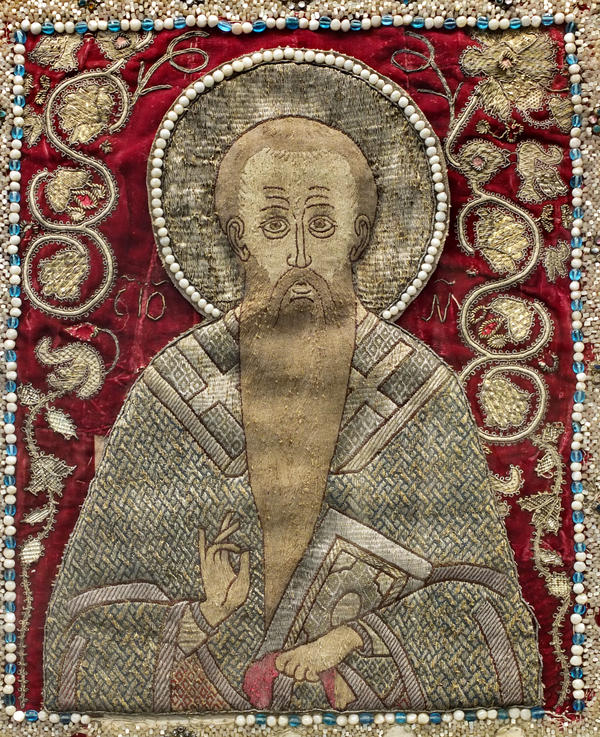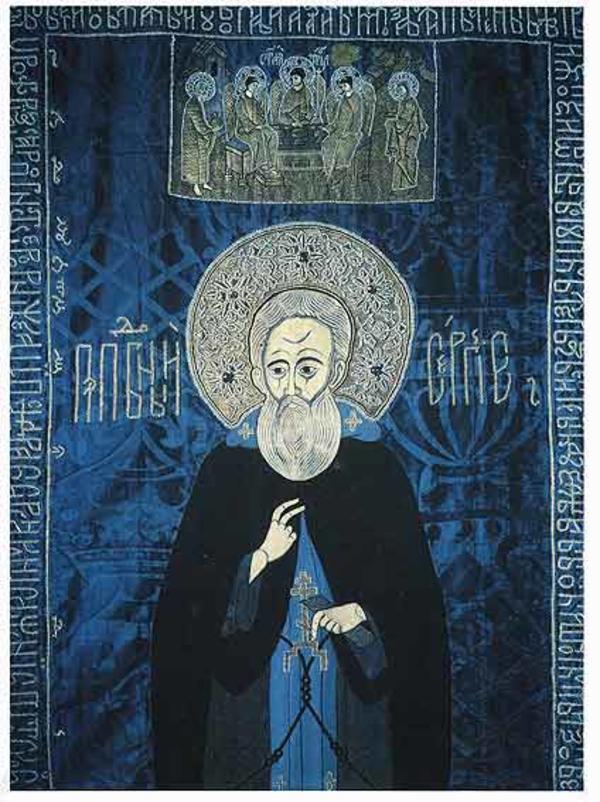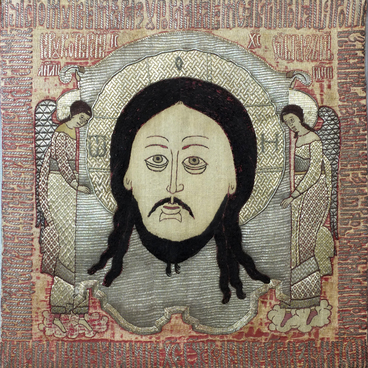The podea is a special cloth hung below the bottom tier of an iconostasis or at the foot of the most revered icons. It is a sample of ecclesiatical pictorial embroidery, an old Orthodox liturgical art of embroidered icons that followed the same rules and patterns as painted icons or frescoes. The technique was used to produce various church articles: ecclesiastical banners, liturgical cloths, and shrouds that symbolize Jesus' burial cloth.
The podea John the Merciful was executed at the end of the 16th century for an icon of the same name, and is one of the earliest examples of Russian ecclesiastical needlework. It depicts St. John the Merciful, Patriarch of the Orthodox Church of Alexandria in the early 7th century. The saint’s face and hands are worked in satin stitch using silk flesh-coloured thread, while his vestments and the halo are embroidered with silver thread. The thin fingers of the right hand are gracefully circled in a prayer gesture. This and the overall ascetic mood of the podea indicate that the embroideress worked in the style of the Moscow school of icon painting.
The podea John the Merciful was executed at the end of the 16th century for an icon of the same name, and is one of the earliest examples of Russian ecclesiastical needlework. It depicts St. John the Merciful, Patriarch of the Orthodox Church of Alexandria in the early 7th century. The saint’s face and hands are worked in satin stitch using silk flesh-coloured thread, while his vestments and the halo are embroidered with silver thread. The thin fingers of the right hand are gracefully circled in a prayer gesture. This and the overall ascetic mood of the podea indicate that the embroideress worked in the style of the Moscow school of icon painting.




